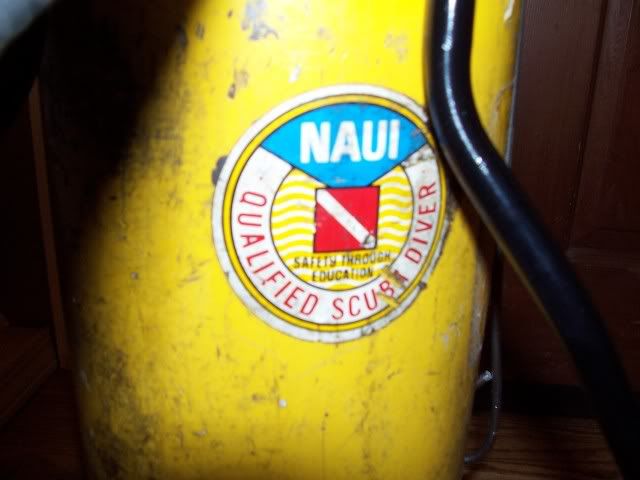Dale,
I have double 72s, double 50s, a steel 72, and an early AL 80. They all do that. You have to think about how a J valve functions from an engineering standpoint. When you breath on your regulator, you are creating an area of lower pressure on the opposite side of the J valve seat (provided it is in the functional position). So when you suck air through your regulator it actually acts to suck the j valve shut against the orifice and stop air flow more (hence your SPG indicates a pressure drop. Then, the pressure of your tank (if above the spring rate of the j valve spring) will force the seat back away from the orifice as the force acting against it is higher than the force acting to close it. I will say that the better a j valve works (the MORE it seals) the more of a pressure drop will occur during inhalation with a SPG mounted. The spring is rated to stop acting against the cylinder pressure at a specified point and to slam shut against a volcano orifice and restrict airflow. Then you go "on reserve" and the seat is mechanically moved away from the orifice allowing air to flow again. It's wonderful and simple.
Keep in mind that in most, if not all J valves (all of the ones that I have rebuilt) the air flows from the dip tube to an orifice behind the j valve seat then acts to help close the seat (in the off reserve or up position). When you actuate the lever (on reserve) then the seat is mechanically moved away from the sealing surface an air is allow to flow from the dip tube to the orifice, past the j valve and through its orifice, then finally to the mating surface where your regulator sits. I hope I didn't explain this poorly but I am at work so I do not have pictures here.
By design, a properly serviced j valve is very safe and reliable provided that it is functional. I have about 50 dives on them now, and have never once had a failure. I have yet to find anyone besides Thalamassamania ( he had one physically fail) who has actually had a real failure and not a "my buddy's buddy saw one break" story or a "I was too stupid to put the reserve lever up before diving" story. Interestingly, unless you have a piece of brass physically break into two pieces, there is nothing inside most j valves to fail. There is one o-ring, typically sandwiched between two PTFE washers, a stem, a seat, a bonnet, that's about it. I just rebuild mine personally, then I verify that they cut air at the appropriate pressure about every ten dives. I feel perfectly safe with them. I wouldn't dive in overheads or deco with them, but that isn't what they were meant for anyway. I write my reserve pressure under my service pressure on the shoulder of the tank, as some of my valves actuate at 500PSI while others actuate at 300PSI.
I will say that doubles with a j valve function the same, with the exception that only the cylinder with the j valve on it holds reserve gas. So the other tank literally empties, then when you go "on reserve" the gas flows through the manifold and equalizes into the other tank. It is neat if you are using an SPG, because pressure will go to 0, then back up to 300 PSI when you pull the lever. Underwater you will hear a sound similar to what a tank makes when you fill it at a dive shop. Cool beans.
Cheers.
EDIT: here, I drew this for you.
You can see how the action of breathing air from the regulator serves to create that low pressure area near the orifice of the j valve, causing the spring to push j valve seat closer to the orifice when the lever is up. This causes pressure to drop as the j valve seat gets close to the orifice, limiting air flow slightly. Then, the spring drives the seat back into its original position, and the SPG swings back up to where it was as the restriction is removed. Remember, Bernoulli's principle states that as air enters an area of restriction speed increases and pressure decreases. This process is transparent to your lungs, as they cannot detect this minute pressure drop. Your SPG, however, can. This is a very basic picture, so don't get all PE on me, it's not like I have access to CAD stuff here. I am just trying to be as clear as possible. Please feel free to ask me any other questions that you may have.
Lastly, the reason that a K valve tank shows a dip in pressure when the valve is only slightly open is a real world example of how Bernoulli's principle works. The air is flowing through the dip tube then hitting a restriction where the valve seat of the K valve is impeding air flow (because it is not open enough). The speed of that air increase, and the pressure decreases, which is indicated on your SPG when you breathe.







